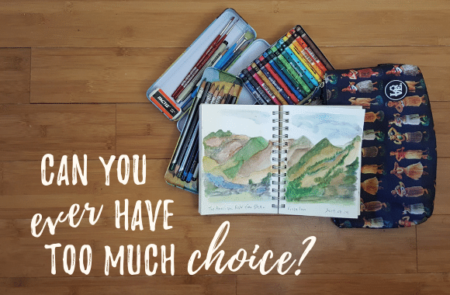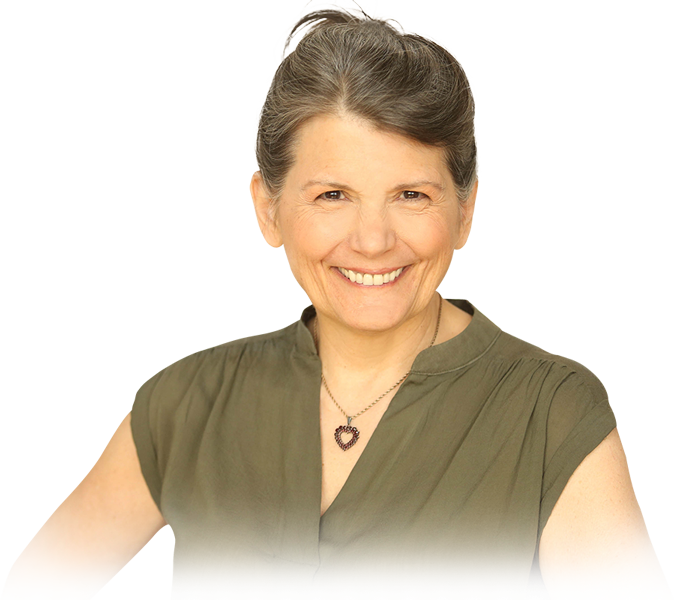 It started slowly a few years ago, with paper I already had, some mediocre brushes and paint I don’t remember buying. Over time, my passion for watercolor grew, expanding my palette, my assortment of brushes, my paper choices, and the area it takes up in my house. It’s enhanced my ability to see and pushed me into learning things I never had interest in… like the rudiments of drawing.
It started slowly a few years ago, with paper I already had, some mediocre brushes and paint I don’t remember buying. Over time, my passion for watercolor grew, expanding my palette, my assortment of brushes, my paper choices, and the area it takes up in my house. It’s enhanced my ability to see and pushed me into learning things I never had interest in… like the rudiments of drawing.
What also happened over time was that it became more and more momentous to sit down and paint, and because it was so significant, I didn’t do it as often as I had thought I would.
And it got harder and harder to take my passion anywhere outside my house because I didn’t know what I was going to want to paint when I got “there.” How could I decide on the size of the paper I should bring along when I hadn’t seen the scene yet? Which brushes would I use? Would I be sorry if I left any of my pigments behind? Where would I get water… and what would I put it in?
That’s how what I euphemistically called “my kit” started to take up a major portion of my suitcase every time I left home.
But in the funny way things happen, I got more than I bargained for!
My intention in dragging all that stuff with me was to create freedom of choice.
But now I also had to carve out a chunk of time on a trip where painting wasn’t the central point.
If anything, it became even more momentous to do it because of the effort involved.
I didn’t know how to begin, but if I did, I was faced with the drudge of cleaning everything and trying to get it all back into my bag at the end… along with the shells I couldn’t leave behind and the Dewey Beach sand that’s still embedded in all the paint in my palette.
No surprise then that so often, I would come home and sadly unpack a kit I hadn’t opened once during my trip.
But then…
Because I’m also working on getting out of the house more often, I joined an urban sketching group—whoever can come shows up at the appointed place and we draw what we see. It could be the cheese and hot pepper shakers on the table at a pizza restaurant, someone at the table, the band playing in the corner, or the tree that shades our picnic bench.
People tend to come with a sketchbook and a pencil or two, an eraser, maybe some pens. Over the course of a couple of meetings, my need to belong pushed me to figure out how to downsize my own kit to what fits into a 7”x 11” pouch that weighs less than 2 pounds.
At first, I thought it was just for those occasions when I went out for a bit with other folks.
But like I said… these things tend to happen in a funny way.
Since then, it’s become a habit to take my pouch with me outside on the deck in the morning before the sun gets too high.
I slip it into my bag if there’s even a chance I might be cooling my feet in some random waiting room.
I pull it out when I’m having a heart-to-heart with an old friend on the phone.
Last night, while the burgers were cooking, I stood on the deck next to the grill and painted the tree across the driveway.
So, in the last couple of months, I’ve painted more, drawn more, experimented more. I can see improvement in my skill. I have more ideas than I used to have about what to paint, how to begin, and when to add color. I know more about composition, what my tools do, how the paper reacts and when “it’s” done. I’ve figured out how the few pigments I carry mix with each other to give me an amazing range of possibility.
This is not the result of having more choice.
It’s the result of constraint.
More choice is not always better.
As practitioners, we seem to have the notion that it’s always better for people to have more and more choice… in fact, some of us might even agree that we’re in the “Create More Choice” trade.
So don’t get me wrong—I’m not saying that choice is a bad thing.
But neither is constraint a bad thing.
If you approach constraint without kicking and screaming about what you’re missing, it can stimulate thinking, enhance creativity, encourage learning, preserve energy, facilitate productivity, and help you have a bigger impact—like the one you came here to make.
How can you use constraint in your business?
Create a set schedule for working in and on your business
You could kick and scream about not being free every minute to do anything you like. And isn’t that the biggest benefit of being self-employed? Why bother if you have to show up at set times as if the boss required it?
Or, you could embrace it—because—
You know when to show up and when you don’t have to show up. It’s easier to schedule client appointments. You are more likely to focus on your business in the hours when you don’t have a client and that helps you form the habit of growing your practice. Your free time is really free, so you can enjoy it without guilt about what you should be doing for your business.
Choose a client to attract
You could kick and scream about not knowing who that would be. You could work yourself into a virtual frenzy because you know your work could help every person in the world, or because you think you’ll be bored or that someone will miss out on working with you.
Or, you could embrace it—because—
You save time, money and energy on attracting clients. Most likely you’ll have more work because you’re focusing what you talk about in a way that more people listen and commit to getting the help they need. You will know more and more about the people you help, so it will become easier and easier to attract more of them.
Limit yourself to working on one business project at a time
You could kick and scream because it looks like less is happening or because deep down, you know that taking on everything at once gives you busyness without having to have a real business.
Or, you could embrace it—because—
You get more done without stress. You complete projects and tasks you know will help you get the practice you want. You aren’t overwhelmed by distractions and you aren’t confused about what to work on, so you have focus when you sit down to work and that makes you feel more productive and effective.
Make friends with the gremlins business wakes up in you
You could kick and scream about it because you just don’t want to deal with them or because you love a good fight and they always provide one. Or maybe because growth is painful. (You’d have a lot of company on that one—even Moshe Feldenkrais said that was why he avoided it any time he could. At the time, I thought he was kidding, but sometimes it was hard to tell.)
Or, you could embrace it—because—
Instead of dying a physical death, learning more about yourself allows you to grow in ways you didn’t think you would. You expand your comfort zone and your tolerance for making it even bigger. You discover that you can express your values through business just as you do through your practice. You have more ways to help your clients—because they need you for your entire Life PhD, not merely the modality certification you have. You become a transformational guide for the people you are most able to help.
Let constraints help you…
Do you use constraints in the process of working with your clients? If so, that alone tells you how useful they are.
The question is how to bring something we all do every day into play in business in order to make success more likely.
To get started, discover places where you already use constraints every day without thinking and accept them as the norm—like making a salad with what’s already in the fridge… even if you’ve got wild rice but no lettuce.
Then start to look for places where introducing a constraint could create possibility you don’t currently see—like spending 10 minutes in the bathroom in the morning instead of 40 and getting time for something you keep saying you’ll do… when you have time.
Finally, extend that thinking to the business of your practice. Make friends with constraints and you’ll find a powerful ally in getting more of what you hope for from your work.
PS… if you’re on the path of transformational leadership and haven’t yet joined us in the Transformational Touch group… well, all I can say is… whyever not?
~~~~~
Did this help you? Yes? Great! To get my blog posts before they go public, subscribe below!

